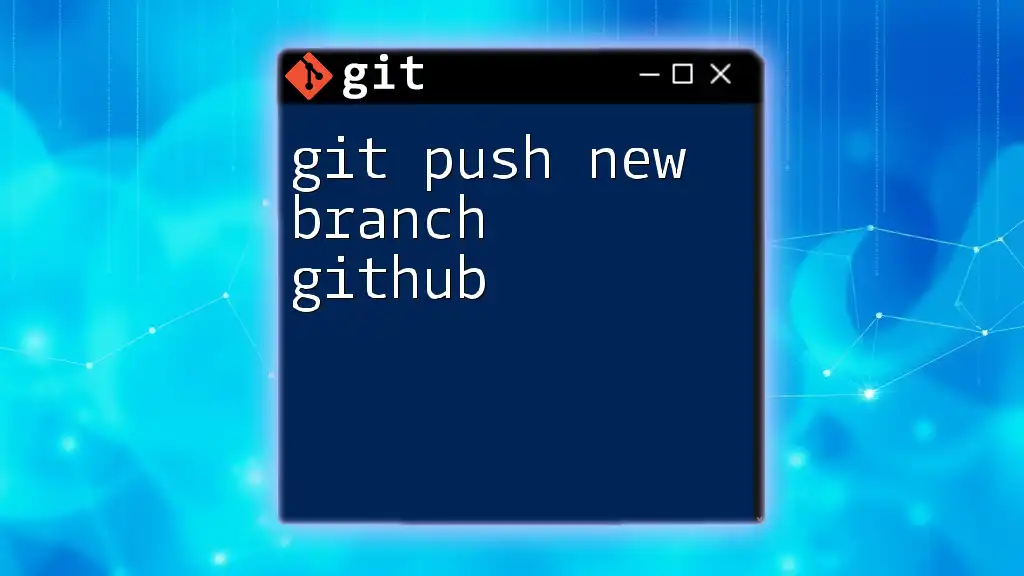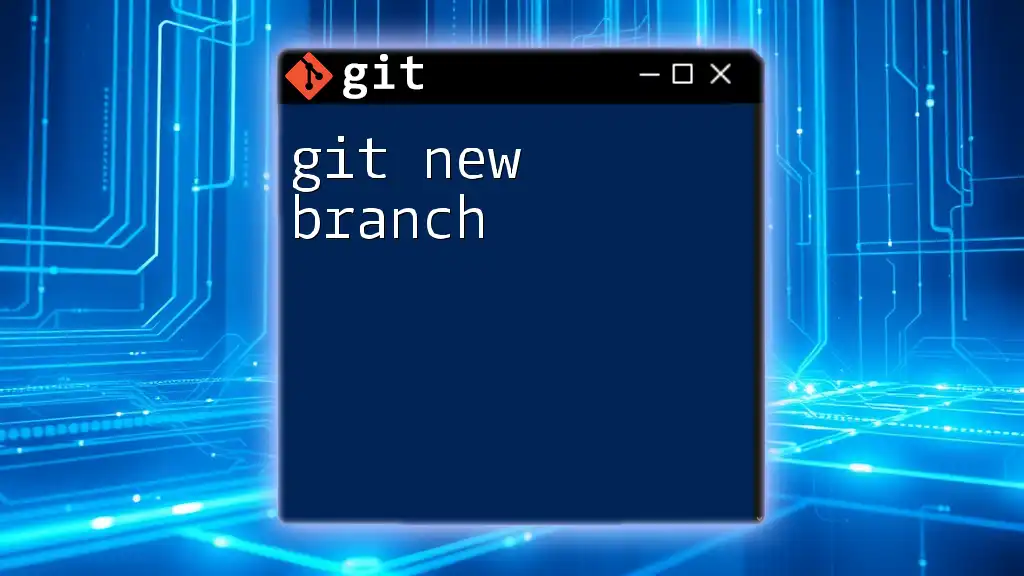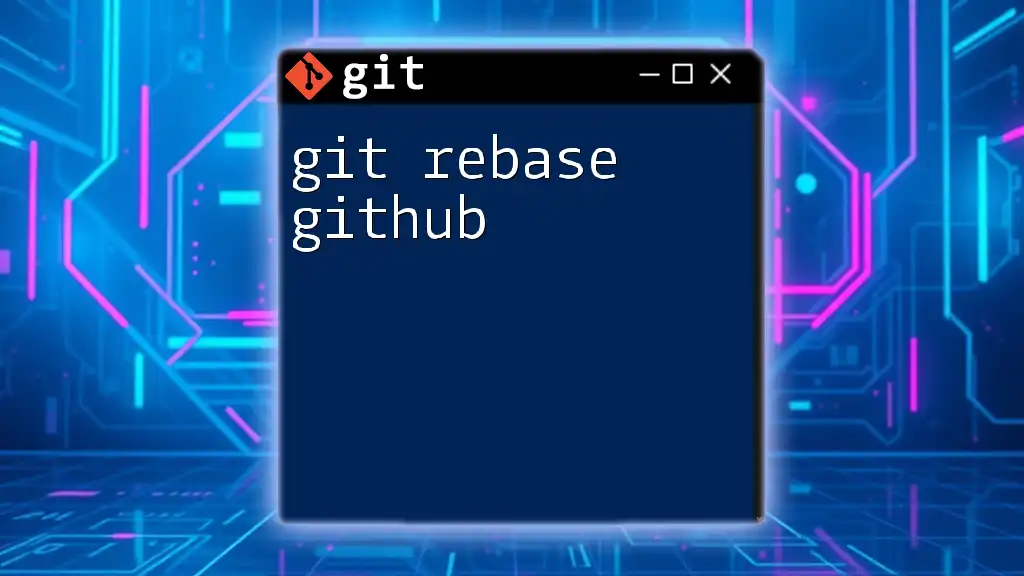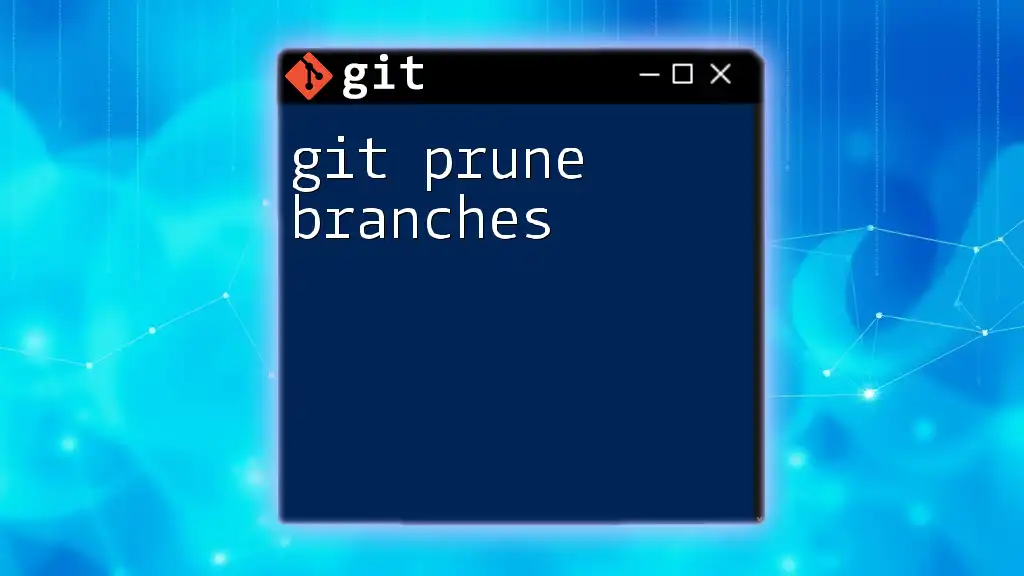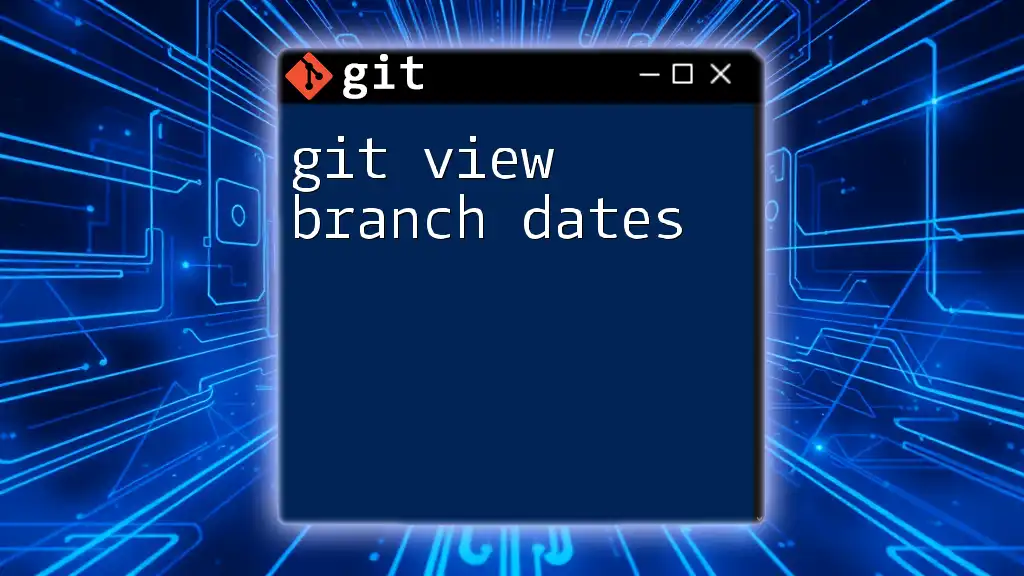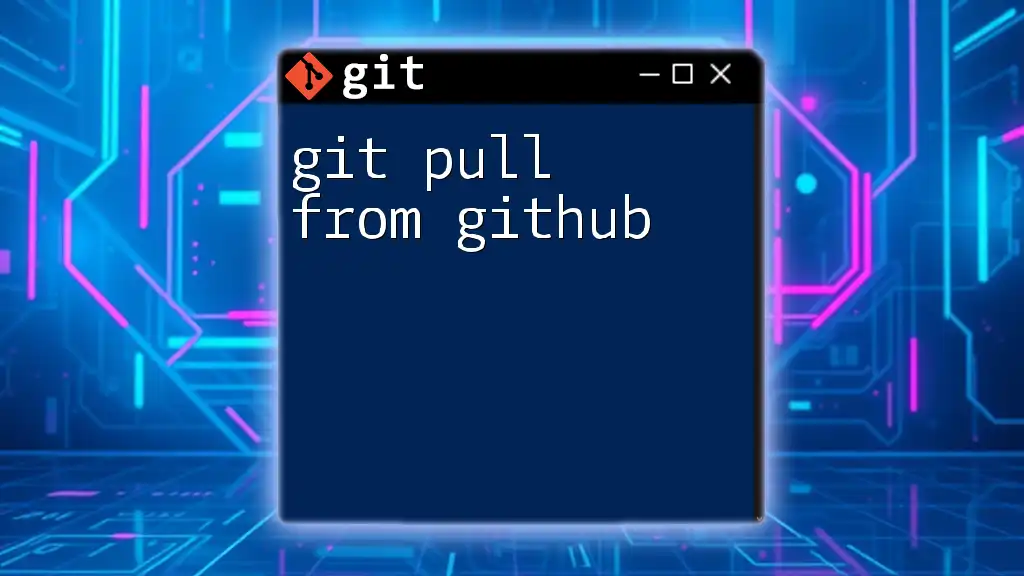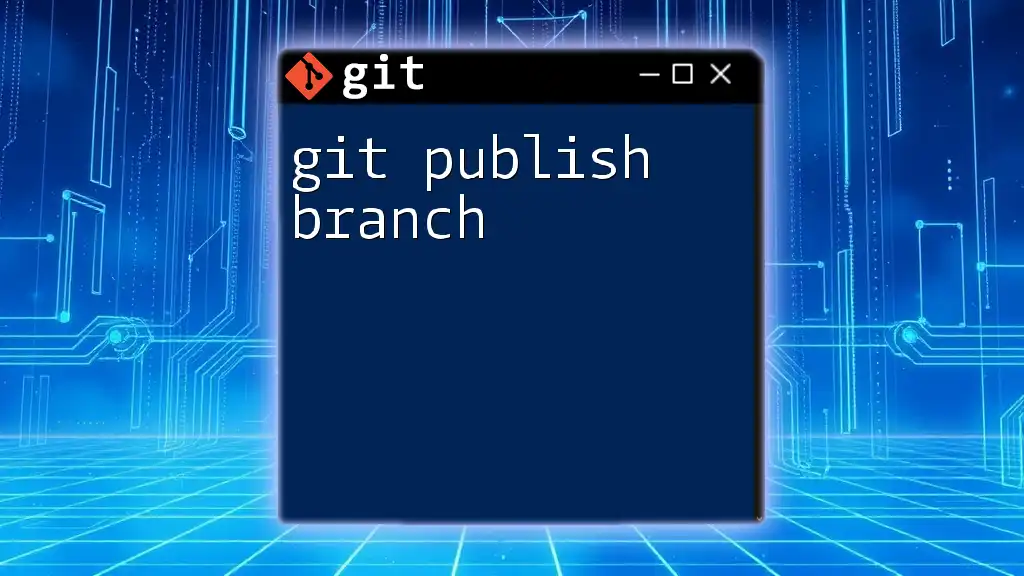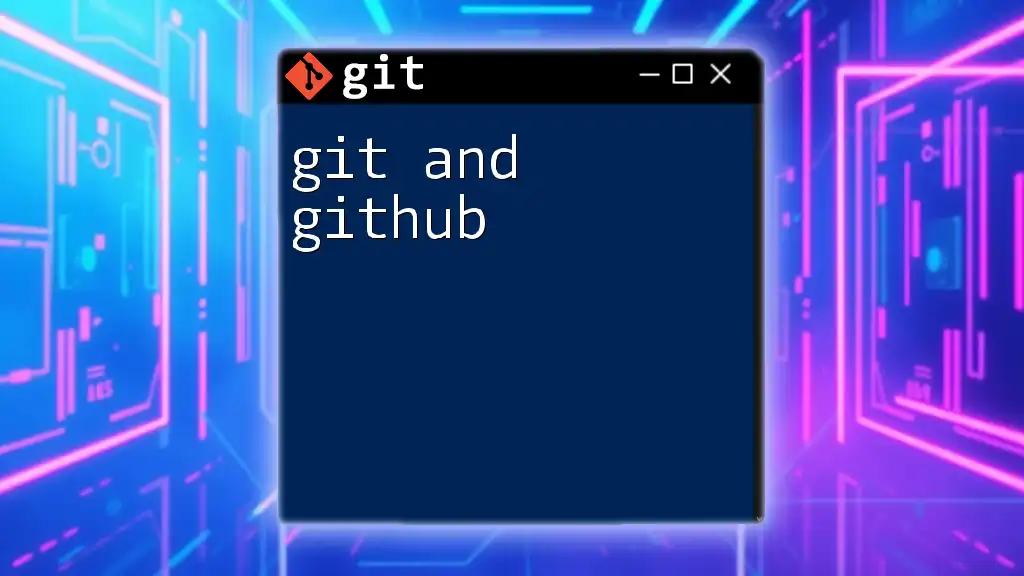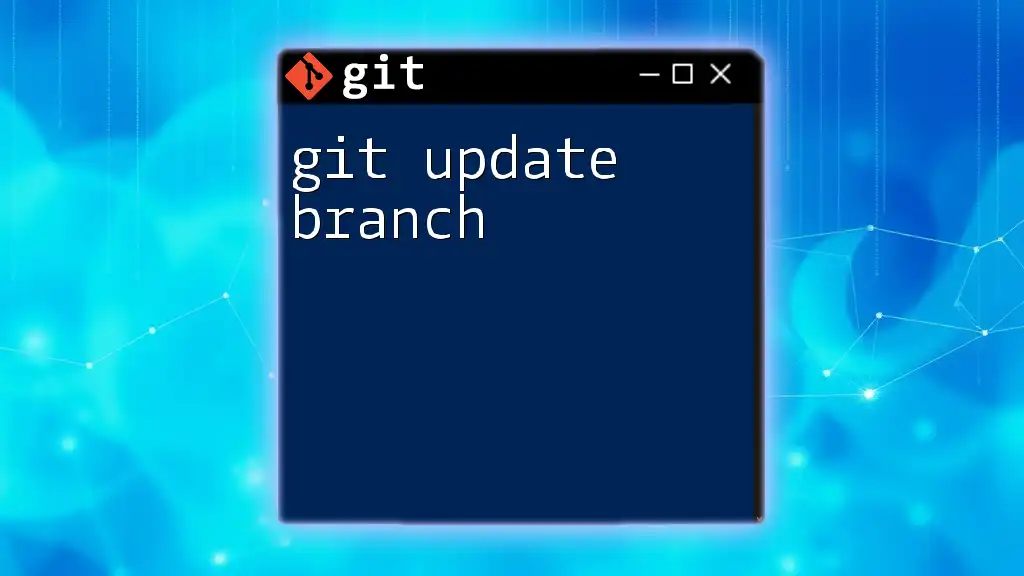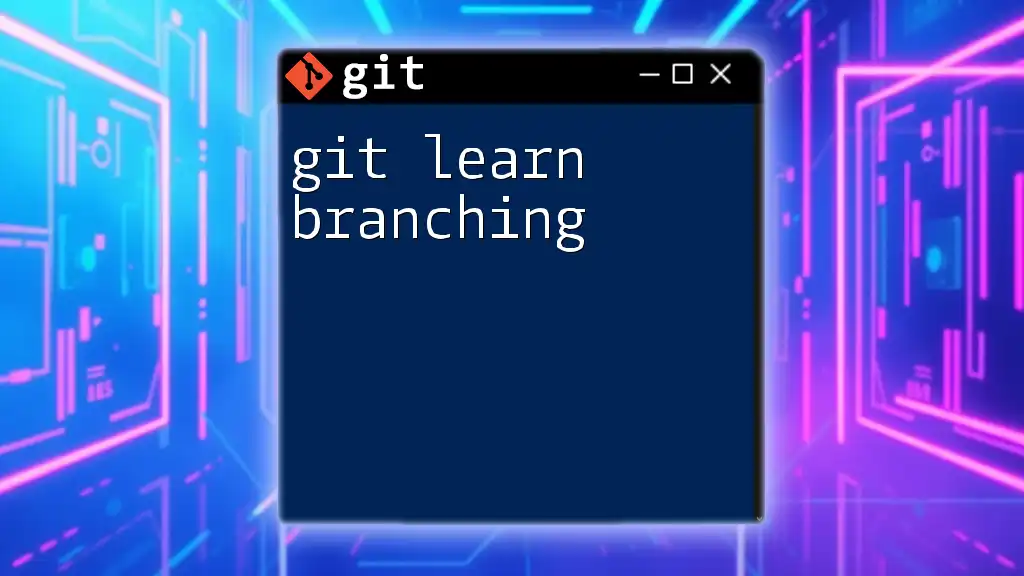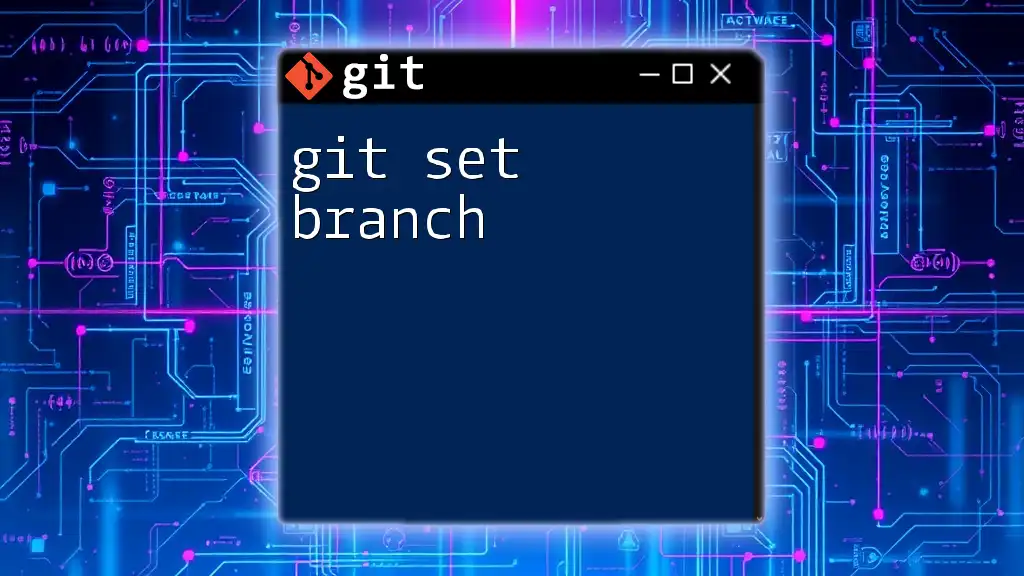To push a newly created branch to GitHub, use the command `git push` followed by the name of the remote (usually `origin`) and the name of the branch you want to push.
git push origin your-branch-name
Understanding Branching in Git
What is a Branch?
In Git, a branch is a pointer to a specific commit in the repository’s history. Branches allow developers to work on multiple features or fixes simultaneously without interfering with the main codebase. This is particularly helpful in collaborative environments where different team members are developing various functionalities at the same time.
Creating a New Branch
To create a new branch, you would use the following command:
git branch <branch-name>
Here, `<branch-name>` should be a relevant name that describes the purpose of the branch. For example, if you are working on a feature to improve the login system, you might name your branch `improve-login`.
Advantages of Using Branches
Isolation of Features
Branches provide an isolated environment where developers can build new features. This isolation prevents unfinished or experimental code from affecting the main production code, commonly referred to as the "main" or "master" branch.
Experimentation
Branches are invaluable for experimenting with new ideas without any risk. If you want to try a new approach to a feature, you can create a branch, make changes, and test them thoroughly. If the experiment fails, you can simply delete the branch without impact on the main codebase.
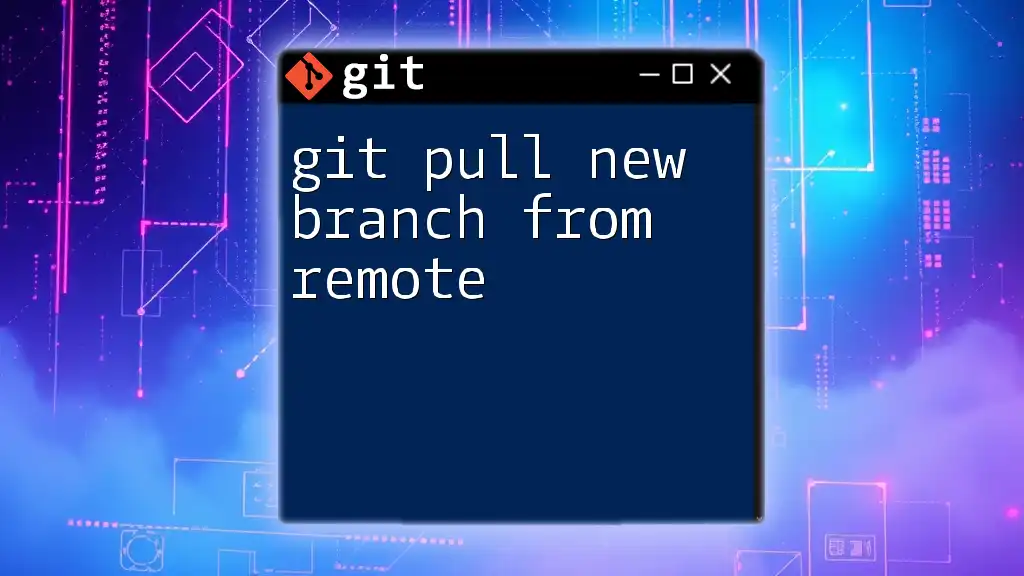
Steps to Create and Push a New Branch to GitHub
Initial Setup
Before creating a branch, ensure you have your repository cloned on your local machine. Use the following command to clone the repository:
git clone <repository-url>
This command copies the remote repository to your local system, allowing you to make changes and push them back.
Creating a New Branch
Once inside your cloned repository, create a new branch and switch to it using:
git checkout -b <new-branch-name>
This command does two things:
- Creates a new branch with the name you specified.
- Checks out (switches to) that branch immediately. This allows you to start working on it right away.
Making Changes
After you’ve created a new branch, you can edit files, add new functionality, or fix bugs. Once you’ve made your changes, you need to stage and commit them. Use the following commands:
git add <file1> <file2>
git commit -m "Description of changes"
The `git add` command stages the specified files, while the `git commit` command creates a snapshot of your changes with a descriptive message.
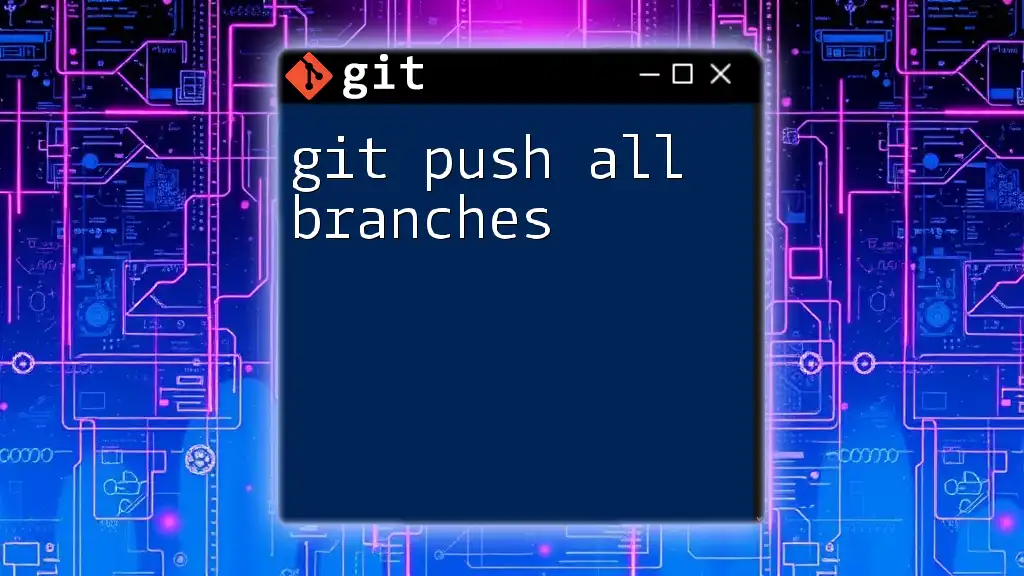
Pushing the New Branch to GitHub
Verification of Current Branch
Before pushing, it’s good practice to check which branch you’re currently on. Use this command:
git branch
The current branch will be highlighted with an asterisk (*), ensuring you are on the correct branch you wish to push.
Understanding Remote Repositories
The remote repository is the version of your project hosted on a server, such as GitHub. To push your branch, you need to understand how to reference this remote, which is typically named `origin`.
The Git Push Command
The basic syntax for pushing to a remote branch is:
git push <remote> <branch>
Here, `<remote>` usually refers to `origin`, and `<branch>` is the name of the branch you want to push.
Perform the Push
To push your newly created branch to GitHub, use:
git push origin <new-branch-name>
This command not only uploads your commits from your local branch to the remote repository but also makes the new branch available for your collaborators.
Confirming the Push
After executing the above command, visit your repository on GitHub to confirm that the new branch has been successfully created. Navigate to the "Branches" section, and you should see your branch listed there.
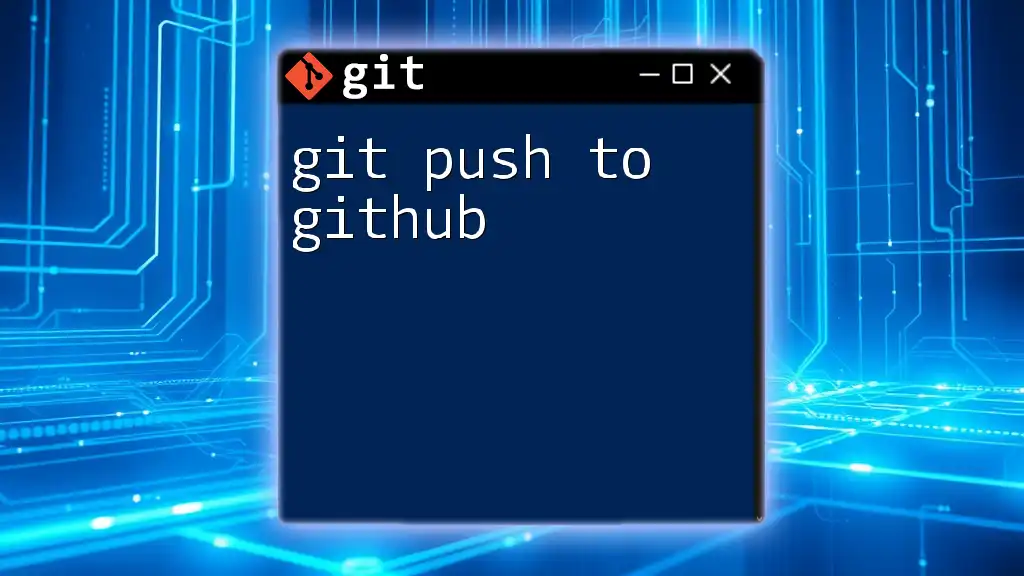
Common Errors and Troubleshooting
Error: `failed to push some refs`
This error usually indicates that there are commits in the remote branch that you don’t have in your local branch. To resolve this, you need to pull the latest changes from the remote before pushing:
git pull origin <new-branch-name>
After resolving any merge conflicts (if they arise), you can push your changes again.
Error: `no upstream branch`
This error happens when your new branch hasn’t been set to track a remote branch. You can resolve this by using:
git push --set-upstream origin <branch-name>
This command will establish a link between your local branch and the specified remote branch, allowing you to push and pull changes seamlessly in the future.
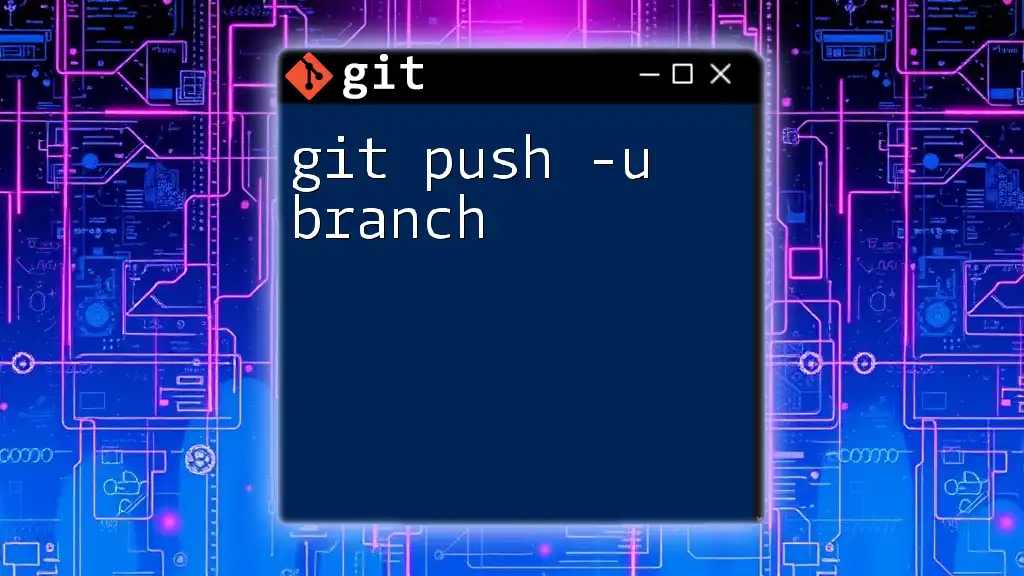
Conclusion
Pushing a new branch to GitHub is a straightforward yet powerful feature of Git. By following the steps outlined in this guide, you can ensure that your development process remains organized and collaborative. Remember, utilizing branches effectively is a best practice in version control, making it easier to manage features and fixes independently.
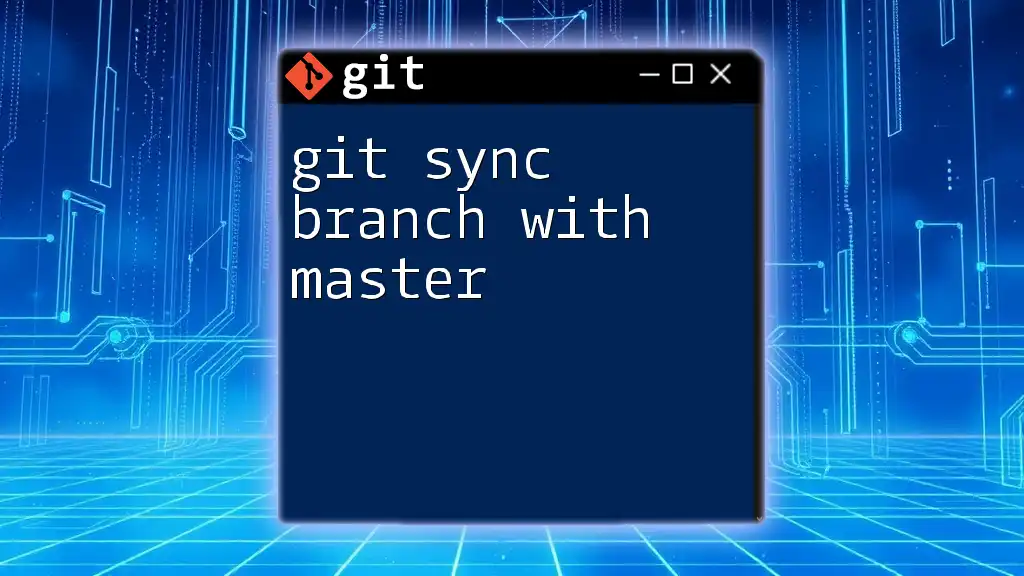
Additional Resources
For further learning, you can refer to the official Git documentation for deeper insights into branching and collaboration. Additionally, there are numerous Git command cheat sheets available online that can help you master this essential tool.
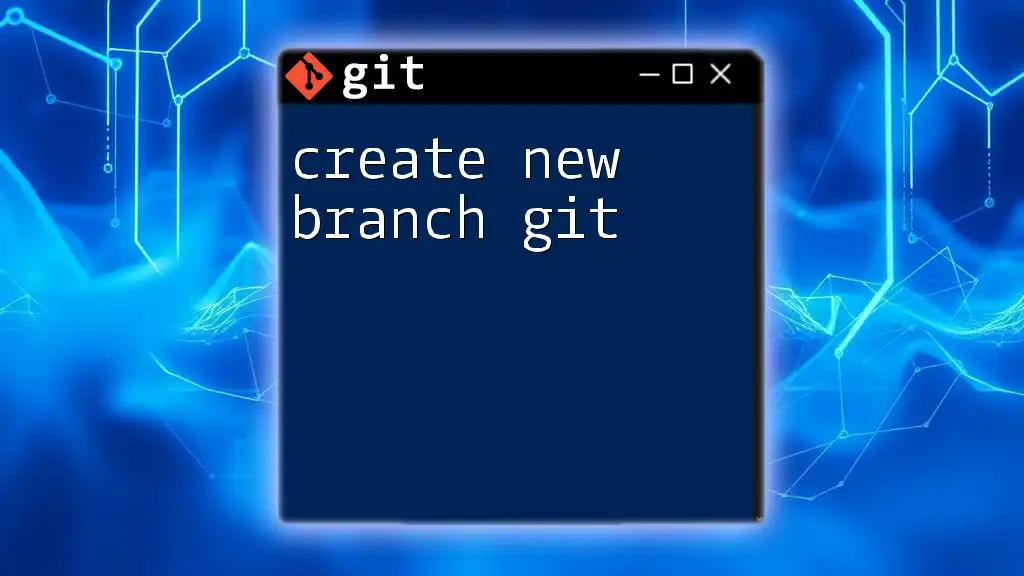
Call to Action
If you’re eager to improve your Git skills and stay updated on the latest tips and techniques, consider joining our learning community. Subscribe to our newsletter for more tutorials, tips, and resources tailored to your learning needs!

